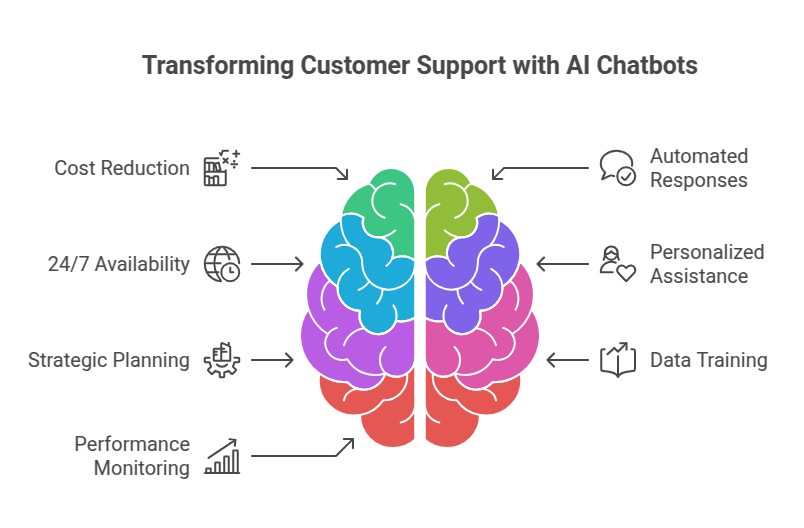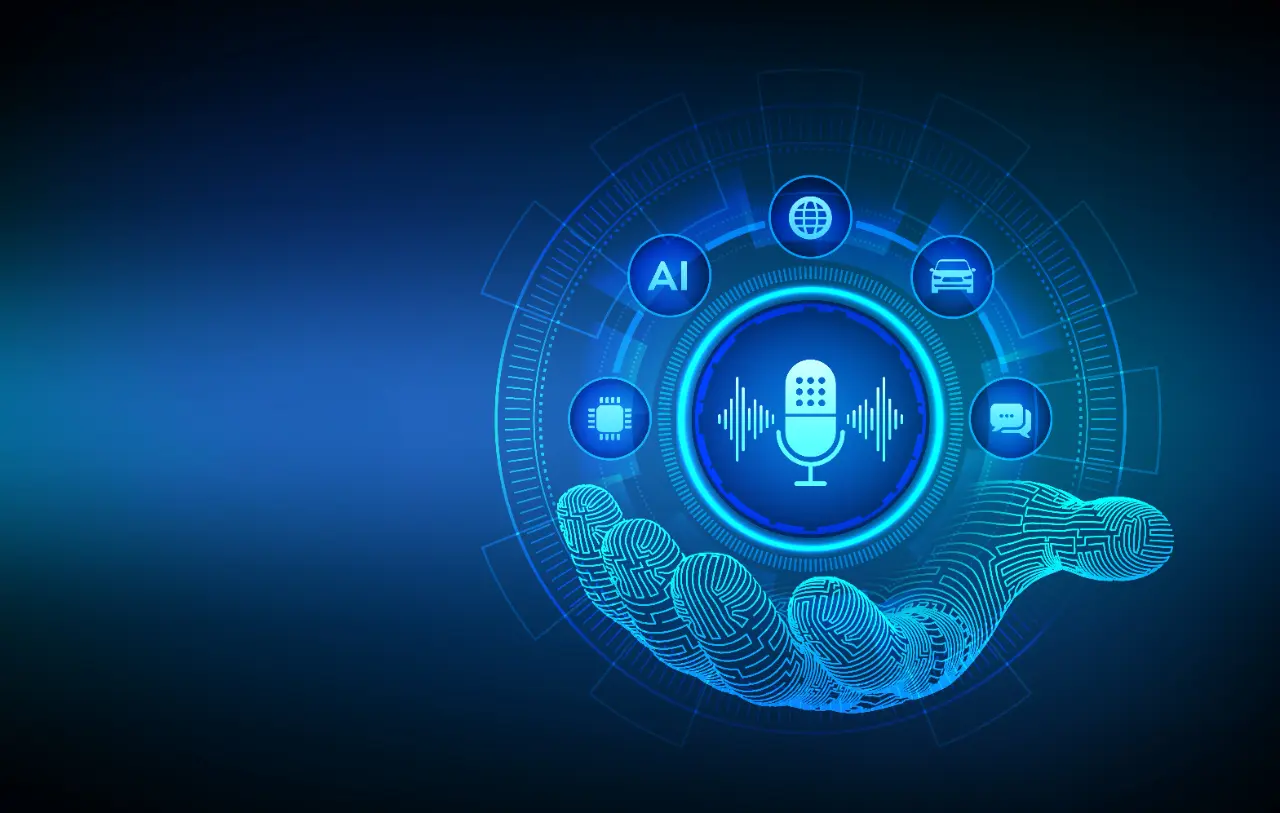In 2025, chatbots are smarter they understand people better, talk more naturally, and connect easily with other systems. This will save time, reduce costs, and help customers feel more satisfied with their experience. In this guide, you’ll learn how AI chatbots are changing customer service, the benefits they bring, what features to look for, and how your business can get started.
They work 24*7, reply instantly, and get smarter over time by learning from conversations. These bots can help with things like tracking orders, answering FAQs, booking appointments, or guiding users to the right information, all without needing a human agent every time. Customer service in 2025 is faster, smarter, and more convenient than ever before. People don’t want to wait on hold or repeat their issues to different support agents. They want quick answers, day or night, on their phones, computers, or social media. To meet these growing expectations, many businesses are now using AI chatbots.

What is an AI Chatbot for Support?
An AI chatbot for support is an intelligent virtual assistant powered by artificial intelligence technologies that can understand, process, and respond to customer queries in natural language. An AI chatbot for support is a smart helper that chats with customers online. It uses advanced technology to understand what people are asking and gives quick, helpful replies. These chatbots can work on websites, apps, or messaging platforms, and they’re always available to answer questions, guide users, or solve simple issues, without needing a real person every time.
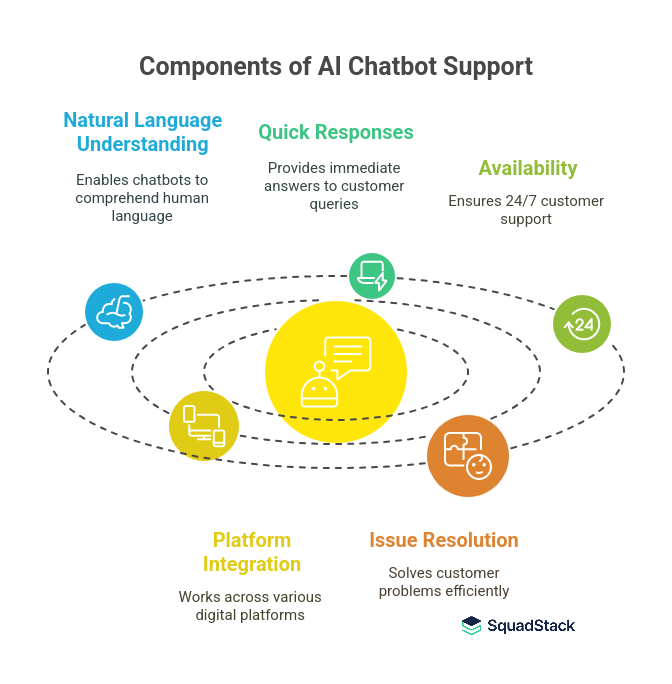
Key Components of AI Chatbots for Support Systems
Modern AI chatbot platforms integrate several critical components that work in harmony to deliver exceptional customer experiences:
Machine Learning Models help AI chatbots get smarter over time by learning from past conversations. They understand what the user wants (intent), and how the user feels (sentiment), and choose the best reply. This makes the chatbot more accurate and helpful with each interaction.
Natural Language Processing (NLP) forms the foundation of any effective AI chatbot for support, enabling the system to understand and interpret human language with remarkable accuracy. This technology allows chatbots to process colloquialisms, context-dependent queries, and even emotional undertones in customer communications. Machine Learning algorithms continuously improve the chatbot's performance by learning from each interaction. These algorithms analyze patterns in customer queries, successful resolution paths, and feedback to enhance future responses and reduce error rates.
Knowledge Base Integration ensures that the AI chatbot for support has access to comprehensive product information, troubleshooting guides, and company policies. This integration enables chatbots to provide accurate, up-to-date information across all customer touchpoints.
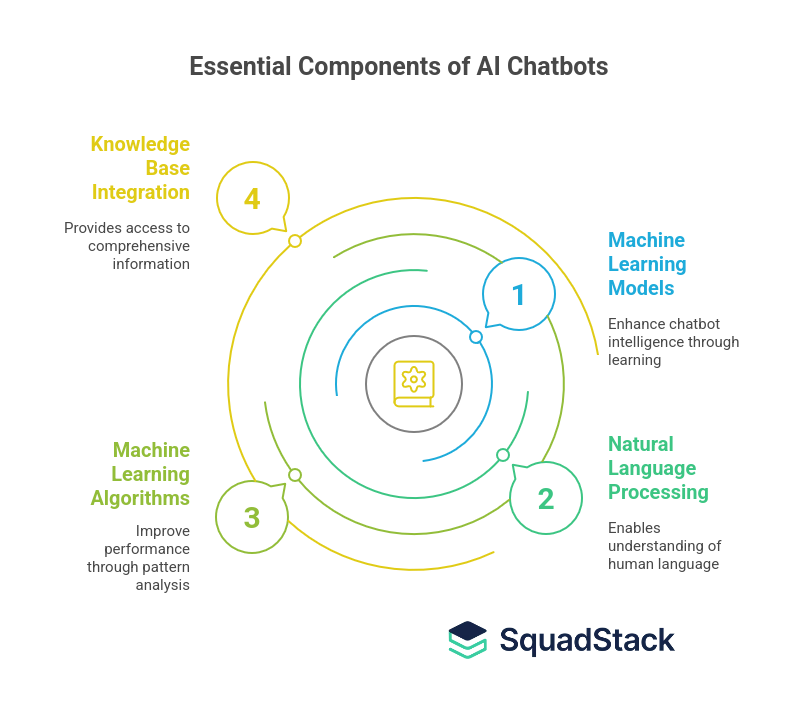
Benefits of Implementing an AI Chatbot for Support
The implementation of an AI chatbot for a support system delivers numerous advantages that directly impact both customer satisfaction and operational efficiency. Businesses around the world are seeing big improvements by using chatbots in smart ways.
Better Customer Experience and Satisfaction
AI chatbots have become a key part of modern customer support because they make the experience faster, easier, and more enjoyable. One of their biggest advantages is the ability to give instant answers. Customers no longer have to wait on hold, send emails, or go through long processes just to get help. This quick response makes people feel heard and valued, something that matters a lot in today’s world.
Fast and friendly help can be the reason someone chooses your business over a competitor. AI chatbots also offer personalized service. They can remember previous chats, know what the customer likes, and even suggest solutions based on past behavior. This creates a more natural, helpful, and engaging conversation.
Instead of giving generic replies, chatbots can speak to customers in a way that feels personal and relevant. This builds trust, keeps customers happy, and makes them more likely to come back, turning one-time buyers into loyal customers.
Operational Efficiency and Cost Reduction
Using AI chatbots in customer support can lower operating costs by as much as 30% while handling up to 80% of common customer questions. This enables support agents to concentrate on complex issues that require emotional intelligence, critical thinking, and personalized solutions.
AI chatbots are also highly scalable. That means businesses can easily manage busy periods, like holiday seasons, without hiring more staff. Even when customer inquiries increase, chatbots keep service levels consistent and efficient, helping companies save time and money while keeping customers satisfied.
24*7 Availability and Global Reach
One of the biggest advantages of using an AI chatbot for support is that it’s always available. Unlike people, AI chatbots don’t take breaks or sleep. They’re always ready to help, which is great for companies with customers all over the world. By combining speed, consistency, and global reach, AI chatbots help businesses deliver a smooth customer experience, no matter where or when a customer reaches out.
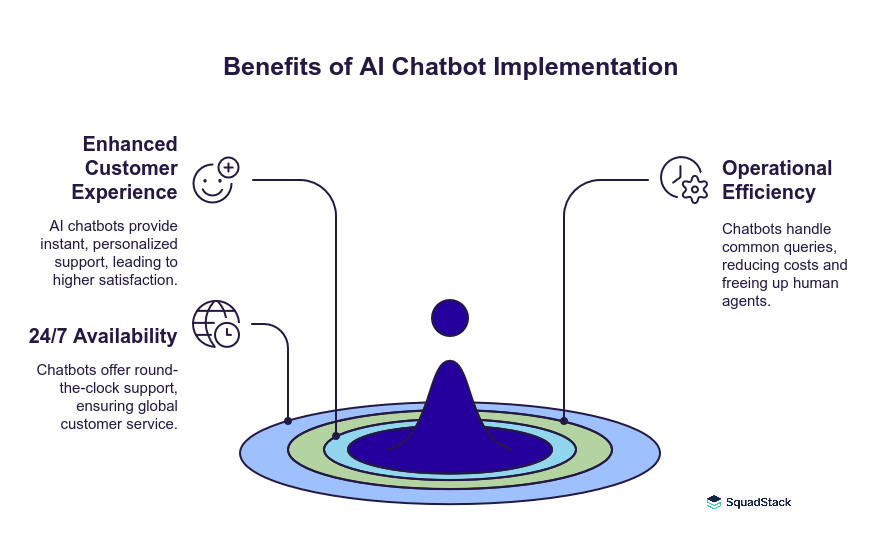
Types of AI Chatbots for Support
Understanding the different types of AI chatbots for support solutions helps organizations choose the most appropriate technology for their specific needs and customer base.
Rule-Based Chatbots
These chatbots work by following fixed rules or steps. They respond only to specific words or choices set in advance. They're best for basic questions like store hours or order status.
Voice-Enabled AI Chatbots
Voice-enabled AI chatbots use speech recognition and voice response technology to let customers interact through spoken commands instead of typing. This makes support faster and more natural, especially in hands-free situations like driving or multitasking. They're often used in virtual assistants like Alexa, Siri, or customer service phone systems.
Multilingual Support Capabilities
Advanced AI chatbots can understand and reply in different languages. They automatically detect the customer’s language and respond accordingly. This is very helpful for businesses that serve people from different countries.
Contextual Chatbots
These chatbots remember past interactions and use context to respond better. They can hold more natural, ongoing conversations by Contextual understanding the user's history.
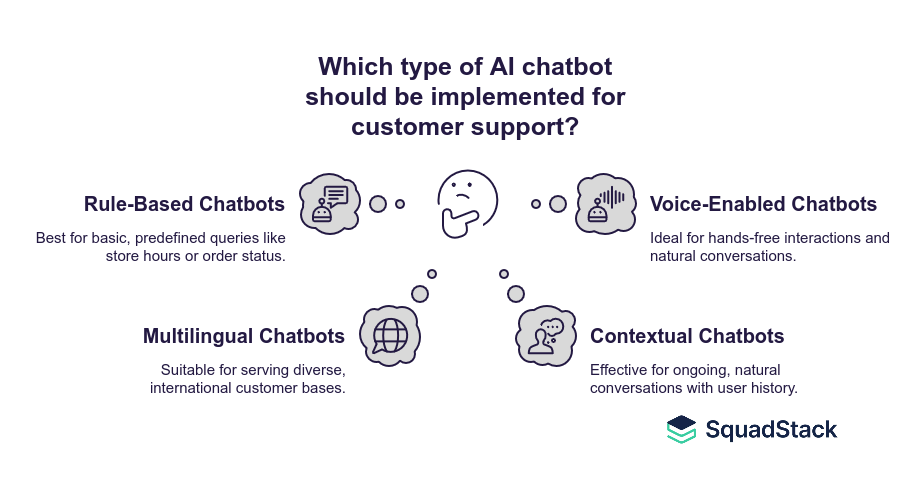
Key Features Every AI Support Chatbot Should Have
When evaluating AI chatbots for support solutions, several critical features distinguish exceptional platforms. A good chatbot should be able to understand the way people talk, even if it's casual or includes slang. This helps it respond in a way that feels natural, friendly, and human-like, creating a better user experience.
Natural Language Understanding
A good AI chatbot for support should understand how people talk. This means it can handle casual language, shortened words, and slang. When customers type "can't log in" or "pw not working," the chatbot should know they mean "password problems." The better your chatbot understands everyday language, the happier your customers will be.
Integration Capabilities
Your AI chatbot for support needs to work well with your existing tools. It should connect easily with your customer database, help desk software, and company information systems. This way, the chatbot can access customer history and provide consistent answers across all channels. For businesses seeking comprehensive integration, exploring BPO services can provide the technical expertise needed for smooth implementation.
Analytics and Reporting
You need to track how well your AI chatbot for support is performing. Good platforms show you clear reports about conversation success rates, customer happiness scores, and cost savings. These insights help you improve the chatbot over time and prove its value to your business.
Customization and Branding
Your AI chatbot for support should sound like your brand and look like part of your website. You want to customize its personality, responses, and appearance to match your company style. This creates a seamless experience where customers feel they're talking to your brand, not a generic robot.
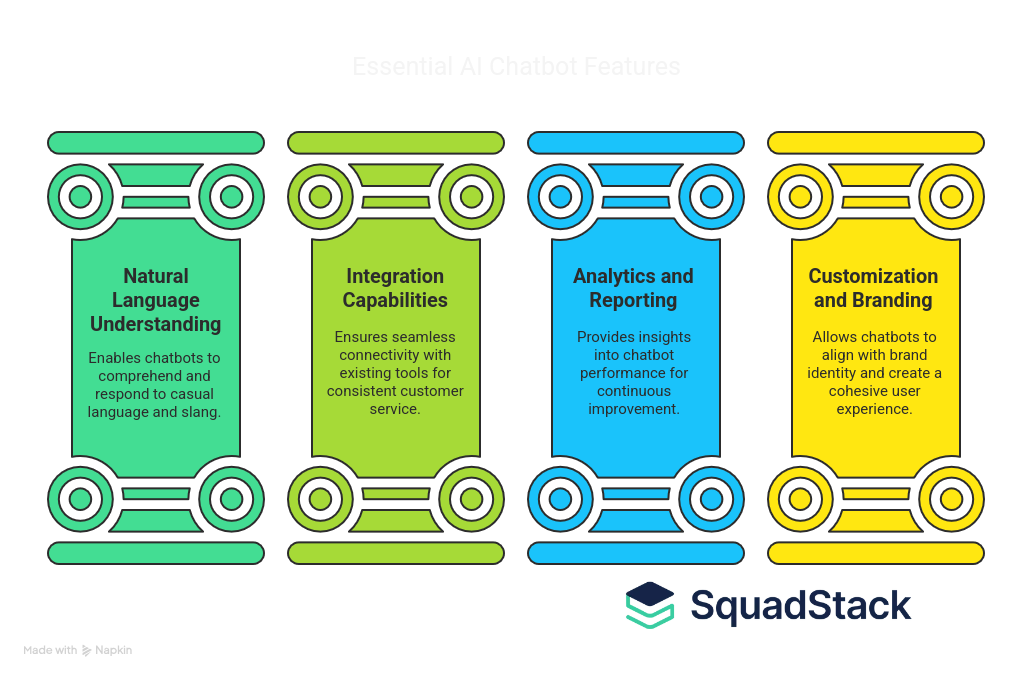
How an AI Chatbot for Support Works?
AI chatbots may seem like they're just chatting, but behind the scenes, they use smart technology to understand and respond like a human. Here's how they work in simple steps:
Understanding the Customer's Message (Natural Language Processing)
When a customer starts a conversation, the chatbot uses a process called Natural Language Processing (NLP) to understand the message.
This includes:
- Breaking the sentence into parts (called tokenization)
- Figuring out the main goal (intent)
- Picking out important words (like names, places, dates)
- Looking at past messages to understand the full meaning (context)Choosing the Right Response (Machine Learning)
Once the chatbot understands what the customer wants, it uses machine learning to decide what to say.
It looks at:
- What the customer is asking.
- What it has learned from past conversations
- How to respond in the best way
Over time, the chatbot learns from experience and gets better at answering questions.
Finding the Right Information (Knowledge Base Search)
- If the chatbot needs to give information, it searches through a knowledge base—a stored collection of helpful answers and info.
- It doesn’t just look for keywords—it uses smart search to find answers that match the meaning of the question.
This whole process happens in just seconds, allowing the chatbot to respond quickly, accurately, and in a way that feels natural to the customer.
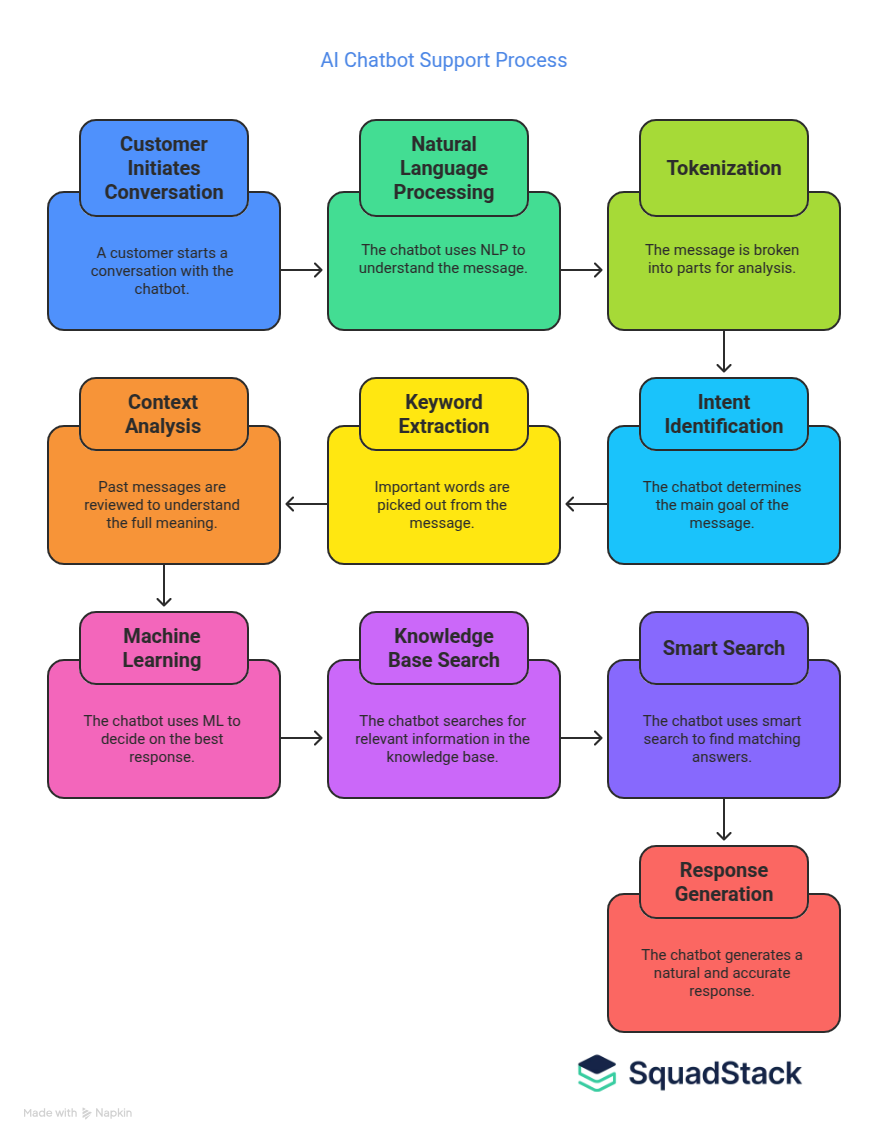
Implementation Strategies for an AI Chatbot for Support
Implementing an AI chatbot for support involves several strategic steps to ensure it delivers accurate, efficient, and user-friendly customer service. The successful deployment of an AI chatbot for a support system requires careful planning, strategic implementation, and continuous optimization. Here’s a clear breakdown of effective implementation strategies:
Planning and Preparation Phase
Before starting with an AI chatbot for customer support, a company should first understand how its current support system works. This includes looking at common customer questions, how support is handled now, and what they want the chatbot to achieve. They also need to decide what success will look like (for example, faster replies or fewer support tickets), what systems the chatbot should connect to (like CRM or helpdesk tools), and who will be responsible for managing it.
Training and Configuration
In this step, the chatbot is taught how to help customers. It learns from past customer chats, product information, and company policies. Giving it good-quality information is important so it can answer questions correctly and make customers happy.
Testing and Quality Assurance
Before going live, the chatbot must be tested carefully. This includes checking how well it answers different kinds of questions, how fast it responds, and if it keeps user data safe. Testing helps catch mistakes and make the chatbot better.
Deployment and Monitoring
The chatbot should be launched step-by-step. At first, it can handle basic tasks. As it gets better and users give feedback, more features can be added. It’s important to keep watching how the chatbot is performing and make changes when needed.
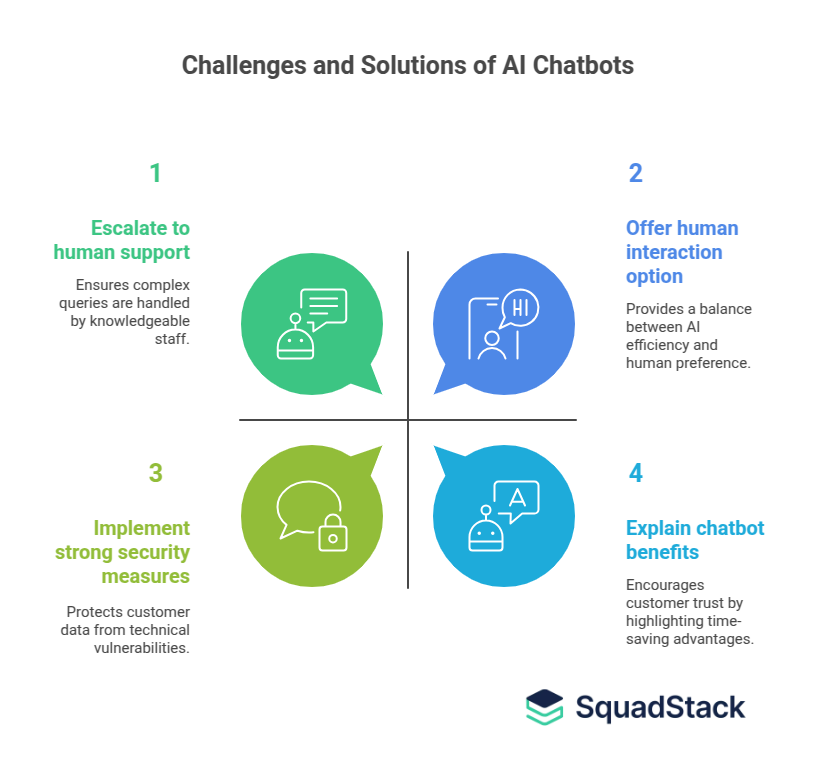
Best Practices for AI Chatbot for Support
Implementing best practices ensures maximum effectiveness and customer satisfaction from your AI chatbot for a support system. Here’s a simple and clear list of Best Practices for AI Chatbot for Support:
Design Clear and Friendly Conversations
- Use short, easy-to-understand replies
- Keep the tone helpful and polite.
- Guide users step-by-step toward a solution
- Match your brand voice (e.g., fun, formal, casual)
Keep Improving with Feedback
- Review chatbot chats regularly.
- Learn from what worked and what didn’t
- Update answers and add new questions over time.
- Use customer ratings to improve performance.
Train with Real and Relevant Data
- Use real customer questions and company information.
- Include FAQs, product guides, and past chats.
- Keep training the bot as products or services change.
Set Up Human Handoff
- Let the bot know when to pass the chat to a human.
- Do this for complex issues, emotional users, or when unsure.
- Make the handoff smooth and quick.k
Protect Customer Data
- Follow data privacy rules like GDPR or CCPA.
- Use secure systems to store and manage information.
- Avoid collecting sensitive data unless needed.
Monitor and Measure Success
- Track metrics like response time, resolution rate, and satisfaction
- Use dashboards or reports to see how the chatbot is doing.
- Make decisions based on real data.
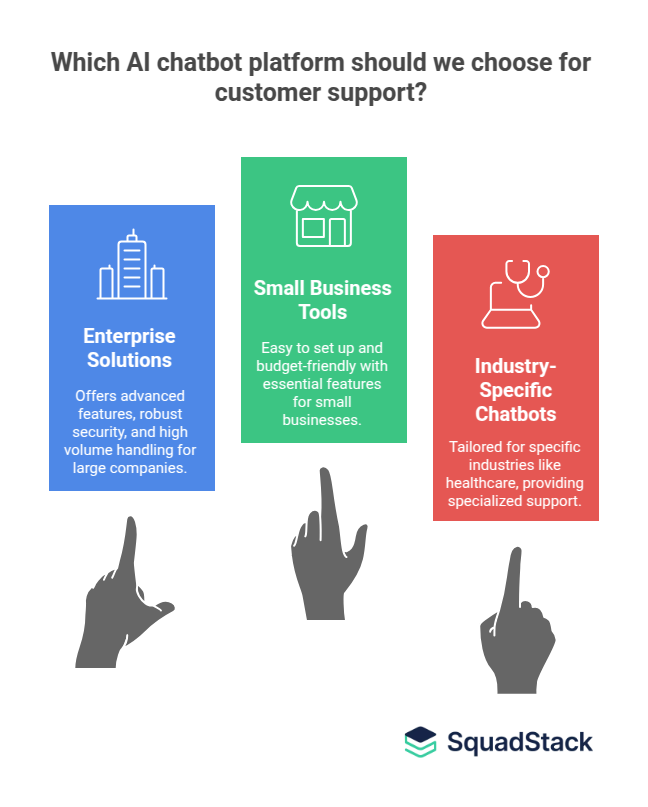
Challenges and Solutions of AI Chatbots for Support
AI chatbots can be very helpful, but they also have some challenges. Companies need to know these and plan for them.
Technical Limitations
- Chatbots may have trouble with very complicated questions.
- They can get confused by unclear or mixed-up language.
- Some topics may need deep knowledge that the chatbot doesn’t have.e
Tip: Let the chatbot pass the chat to a human when it gets stuck.
Customer Acceptance
- Some people still prefer talking to a real person
- They may feel frustrated if the bot doesn’t understand them.
Tip: Offer the choice to speak to a human and explain how the chatbot can save time.
Data Privacy and Security
- Chatbots deal with customer data, so it must be kept safe
- Companies need to follow rules like GDPR or CCPA to protect privacy.
Tip: Use strong security tools and only collect data that’s needed.
Future Trends in AI Chatbots for Support
The future of AI chatbots for support technology promises even more sophisticated capabilities and integration possibilities.
Advanced AI Capabilities
New technologies like GPT-4 and future versions are making AI chatbots smarter. They can understand conversations better, solve problems in more creative ways, and talk more naturally, almost like a real person.
Integration with Emerging Technologies
In the future, AI chatbots will work with things like augmented reality (AR), virtual reality (VR), and smart devices (IoT). This will help them give more interactive and hands-on support, and even fix problems before the customer asks for help.
Predictive Support
In the future, AI chatbots will use smart data tools to understand what customers might need before they ask. This means the chatbot can offer help early, even before a problem happens. This will make customers happier and help businesses work more smoothly.
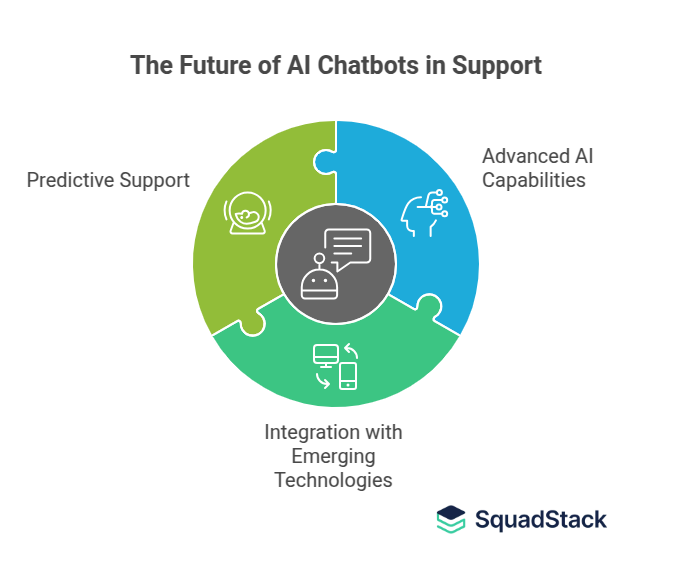
Measuring Success and ROI of AI Chatbots for Support
To know if your AI chatbot is working well, you need to track certain numbers and get customer feedback.
Key Performance Indicators (KPIs)
These are important numbers to check how well the chatbot is doing:
- Resolution rate – how many questions the chatbot solves on its own
- Customer satisfaction scores – how happy users are after chatting
- Average handling time – how fast the chatbot answers and solves issues
- Cost per interaction – how much each chatbot conversation costs
These KPIs show how well the chatbot helps both your team and your customers.
Customer Satisfaction Metrics
Ask customers what they think after using the chatbot. Use tools like:
- CSAT (Customer Satisfaction Score) – customers rate their experience
- NPS (Net Promoter Score) – customers say how likely they are to recommend your service.
This feedback helps improve the chatbot and customer experience.
Cost-Benefit Analysis
Compare how much the chatbot costs with how much money it helps save. Include things like:
- Setup and running costs.
- Time saved by reducing work for human agents.
- Faster and better support for customers.
This helps you see if the chatbot is worth the investment.
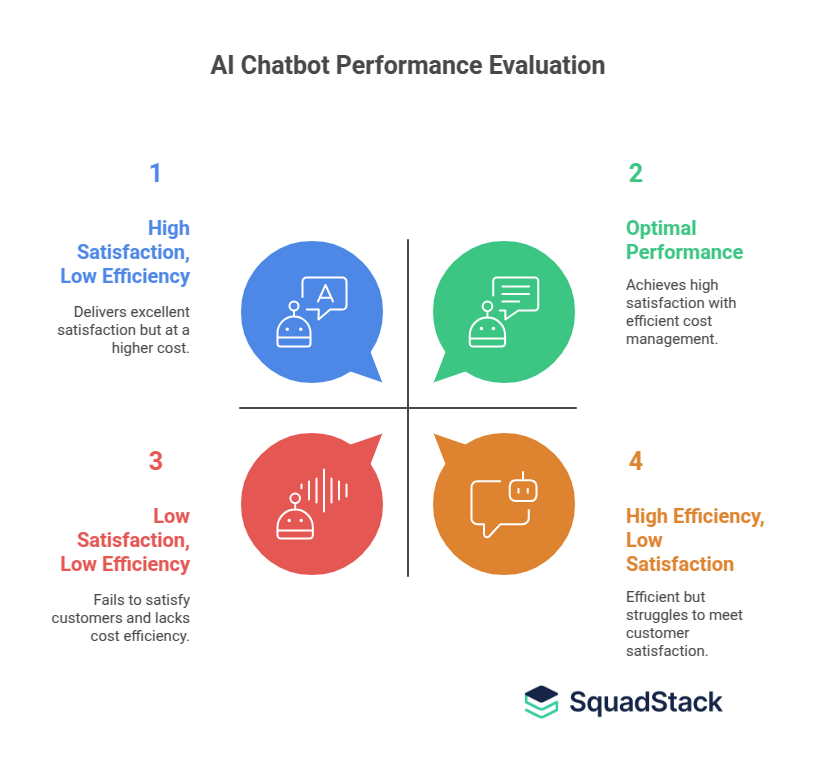
Why Use SquadStack for AI Voice Support?
Based on the latest information and proven performance metrics, here are the compelling reasons why SquadStack is an excellent choice for AI Voice support option for companies:
Massive Training Dataset
- Trained on 600M+ recordings-This big set of real conversations helps the AI pick up on little details and talk naturally, even in tough customer chats.
- 90+ million minutes of real human conversations used for training- By learning from tons of real talk, the AI gets better at sounding friendly and useful when helping customers
Outstanding Connectivity & Conversion Performance
- 90% lead connectivity rate – Businesses reach nearly 9 out of 10 potential customers, far better than the usual 6 or 7 out of 10.
- +25% conversion lift – They see about a 25% jump in the number of people who go from interest to action, like making a purchase or signing up .
- Handles 400k+ calls/day – Their system can manage over 400,000 calls every single day, showing it works well even at huge scale .
Ultra-Low Latency & Real-Time Intelligence
- <700 ms latency – Super fast replies so conversations feel smooth and natural
- Human‑sounding voice quality – The AI talks so clearly it’s hard to tell it isn’t a person.
- Real‑time personalization from your CRM and product usage telemetry – The AI adapts its replies based on your customer’s history and how they use your product
Conclusion
The future of customer support has arrived, and AI chatbots are making a big difference. As we’ve seen in this guide, using an AI chatbot isn’t just about following new tech trends; it’s about changing the way your business helps customers.
The benefits are clear: Companies using AI chatbots can cut support costs by up to 30% and answer 80% of common customer questions automatically. Even better, these chatbots give fast, personalized help anytime—day or night—to customers all over the world.
Success needs a smart plan: To get the most out of your AI chatbot, you need to follow a clear process. This includes good planning, training the chatbot with the right data, and checking performance regularly to keep improving. The goal isn’t to replace people, but to let chatbots handle simple questions so human agents can focus on more difficult or important issues.
